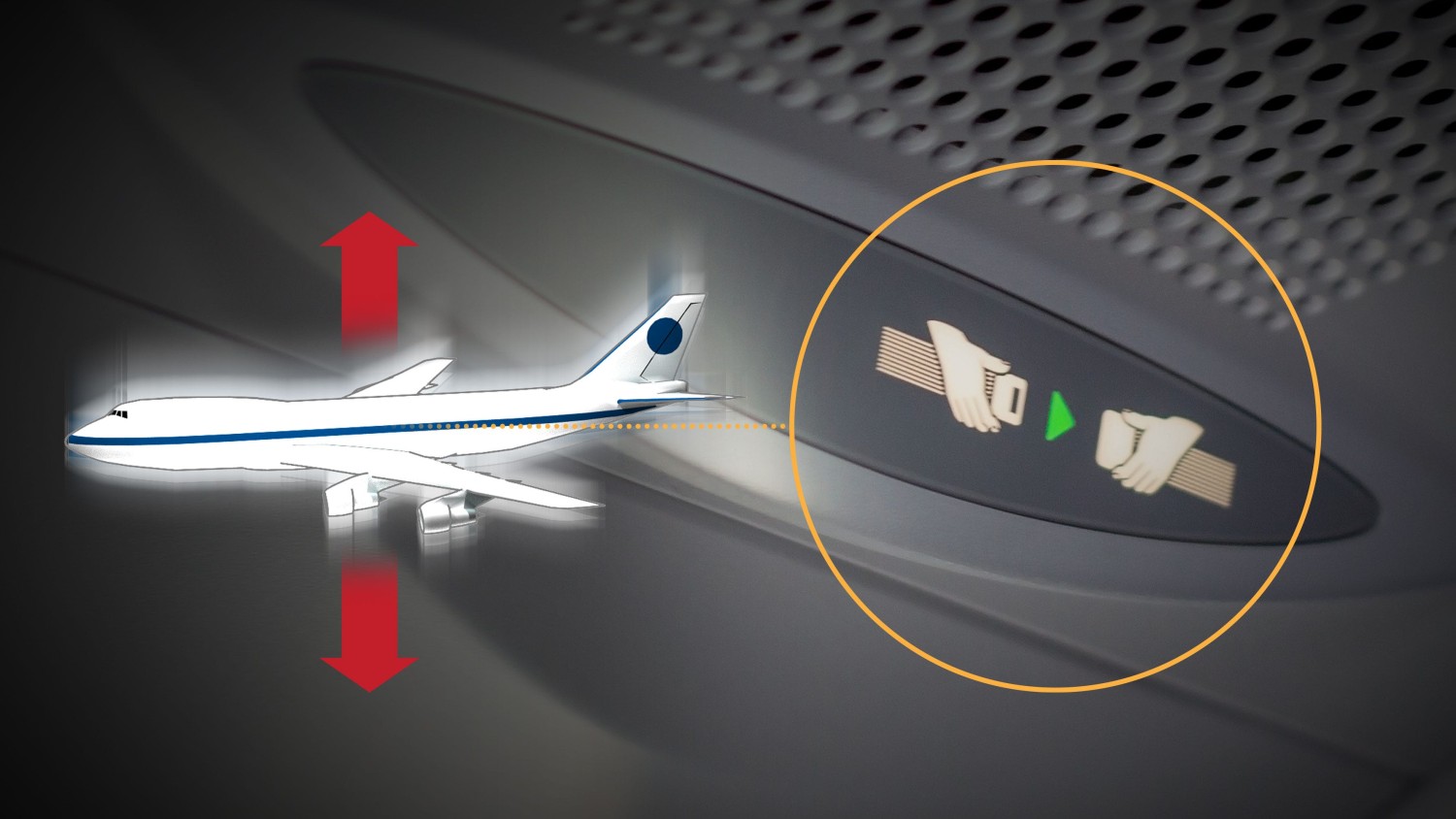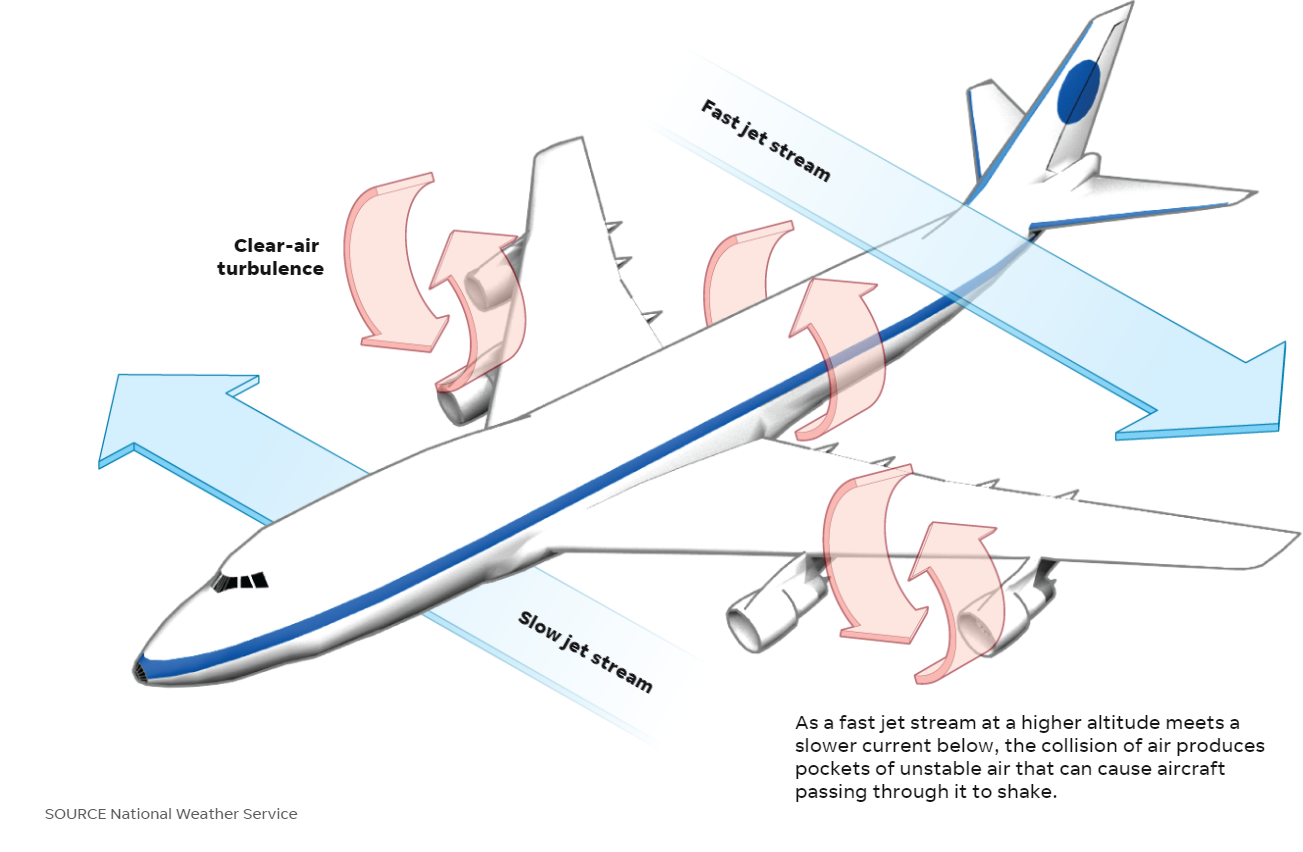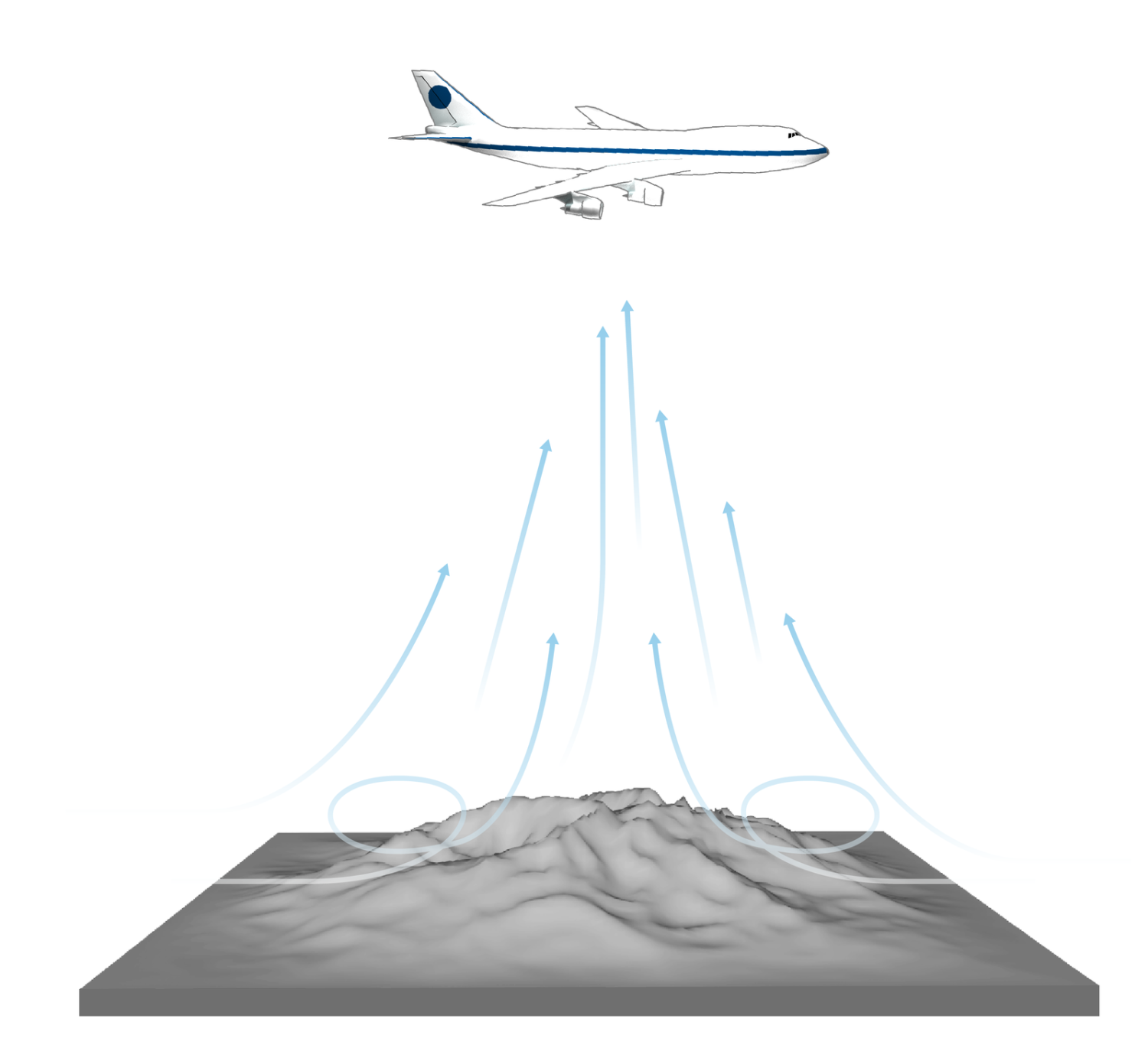
Get ready for the possibility of a little more shaking and bumping on your next flight, a study by scientists at the University of Reading in the United Kingdom suggests.
Clear-air turbulence, unstable air pockets that offer little or no warning to pilots, is on the rise, the study found. Wind shears in the jet stream at cruising altitudes cause the turbulence that shifts and wobbles a plane − which can injure unbelted passengers and flight attendants.
How clear-air turbulence occurs
Pockets created by jet streams traveling at different speeds and directions cause clear-air turbulence. The phenomenon often happens at 15,000 feet or higher, where clouds aren't present to offer clues of the unstable air. Clear-air turbulence is also invisible on conventional radar.

A scientist at the University of Reading examined clear-air turbulence over the North Atlantic between 1979 and 2020. The comparison found increases of each type:
- Severe clear-air turbulence: +55%
- Moderate: +37%
- Light: +17%
The study attributes much of the increase to warmer air from rising carbon dioxide emissions, which increases wind shear in the jet streams and, in turn, strengthens clear-air turbulence in the North Atlantic and globally.
A 2017 study predicted additional greenhouse gases that feed climate change will intensify these wind shears at cruising altitudes within the atmospheric jet streams and increase the unstable air.
Passengers experience three levels of turbulence
Three causes of turbulence that aircrafts encounter
Among three causes of turbulence, clear-air is the hardest to predict, and it's the most likely to affect aircraft.
Is climate change making turbulence worse?
Yes, at least with clear-air turbulence, some scientists say.
Paul Williams, a professor of atmospheric science at the University of Reading and a co-author of the new study, told USA TODAY in June that clear-air turbulence "is going up because of climate change."
Williams said it's unclear how climate change might be affecting mountain-wave or convective turbulence, but clear-air turbulence is becoming more frequent and intense.Thomas Guinn, chair of applied aviation sciences at Embry-Riddle Aeronautical University, agrees: "Turbulence is going to tend to become more frequent and more intense with climate change."
But don't cancel your flight just yet.
"The absolute amount of turbulence is small," Williams said. Even as severe turbulence increases, Williams said, it won't be commonly experienced by the average air traveler: "You can take 0.1% and double it or triple it. It’s still going to be only 0.2 or 0.3%."
Seasonality of turbulence could also be shifting with climate
Clear-air turbulence is more common in the winter, but it's happening more frequently in the warmer months.
"In summer in the future, the amount of clear-air turbulence will be as common as it is in winter," Williams said, pointing to the example of a Hawaiian Airlines flight that encountered severe turbulence in December.
"Anytime somebody asks me about turbulence, I say the same thing," Guinn said. "If you're fastened in your seat belt, the odds of getting injured in a turbulence event are low."
Contributing: Zach Wichter
